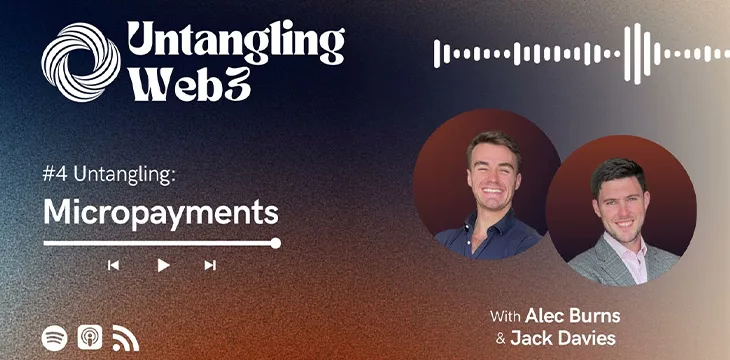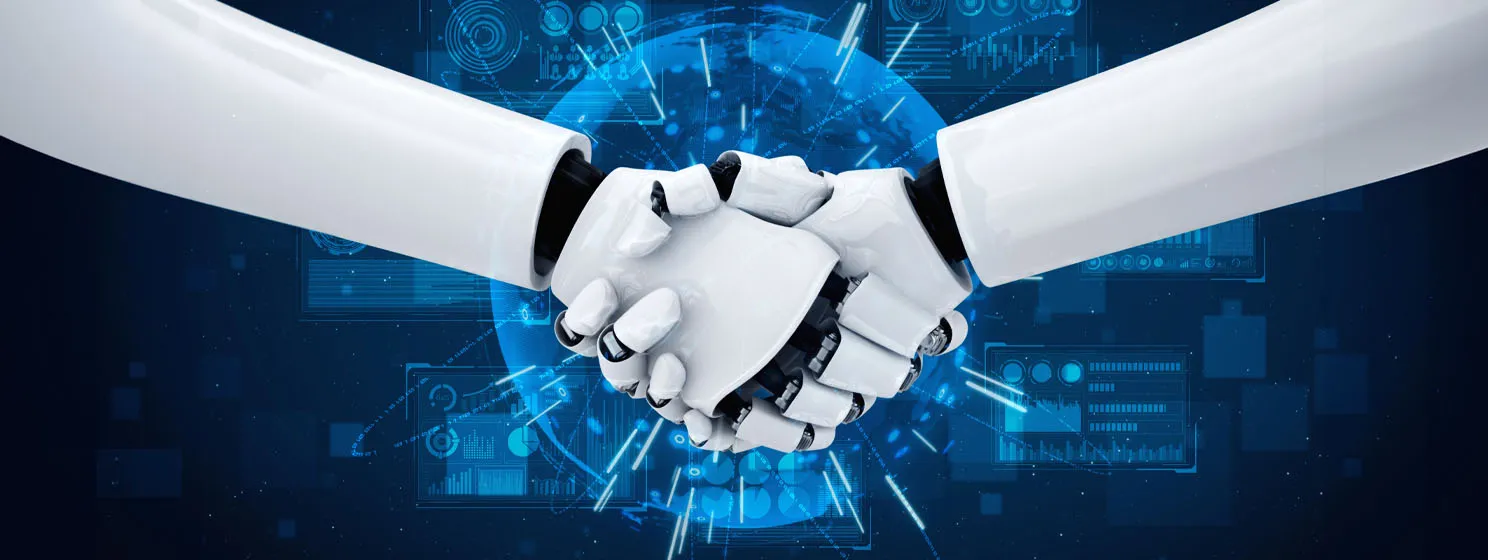|
Getting your Trinity Audio player ready...
|
The fourth episode of the Untangling Web3 Podcast focused on micropayments, a core area of Web3 that hosts Jack Davies and Alec Burns are both extremely excited about. Similar to the last episode, which focused on tokens, episode four is packed with tangible use cases and examples of how micropayments fit into the Web3 landscape.
What are micropayments
“Micropayments to me is the ability to send a very small amount, less than 10p or a penny, to someone for a very cheap transaction fee,” shared Burns.
Davies pointed out that we’re not used to going into stores and spending less than a few pounds due to the fees associated with legacy payment methods. He said we need to start thinking about the 10th or even 100th of a cent transaction and what we’d be willing to spend this amount of money for.
“What would you want to pay for that costs less than a penny?” Burns enquired.
He promised to dive into this question by the end of the episode.
“The idea of micropayments is actually quite revolutionary, and it’s going to be a whole paradigm shift, and there are going to be whole business models that derive specifically from that concept which we could not even have imagined 5 or 10 years ago,” he said.
History of payments on the Internet
Why is this idea of micropayments a new thing?
Davies pointed out that in the early development of Web1, one of the status codes was “402 payment required,” as developers envisioned users would have to pay a small amount to access data.
It didn’t evolve that way.
According to Davies, these types of payments did not happen because there was no payment system in place to facilitate small transactions. Traditional payment systems have several “behind the scenes” fees associated with a transaction that are hidden from the consumer but not the merchant.
Such fees include bank fees, terminal/point of sale fees, and payment processing fees, and they are not limited to credit cards; it’s not free to handle cash either. All of these costs stack up, so below a certain point (50 pence-ish) there would be no revenue for the merchant.
Bringing this back to the web, once digital advertising came in, the direction moved from small payments to an advertising and subscription-based internet.
Burns said Web2 is all about traffic vs. substance, and this is because of the advertising model. However, people are starting to wake up to the state of the Internet and realize instead, they could pay a small amount for a better service.
Davies added that we have an internet system now where we never saw direct payments evolve, so we are now solving these issues with Web3.
“In the Web3 model, in which social media platforms based in it actually monetize through direct engagement, you see where that monetization comes from, there is going to be more transparency, a lot more trust in the process, but also a lot better distribution of the value to consumers as well,” said Burns.
In order for the Web3 model to work properly, we need peer-to-peer transactions enabled by Bitcoin as its plumbing.
“Bitcoin is what presented the first practical way to do micropayments by incentivizing a competitive network to process payments instead of being a large gate-keeping network,” Davies said.
He pointed out that micropayments can be used for payment to consume some sort of content and also to monetize data.
“For me, it’s kind of funny that we’ve come full circle, and micropayments that were envisaged right at the beginning are now being re-introduced for some of the downstream problems that web2 brought along with it,” Davies said.
Micropayment use cases: Micro incentives
There are two key areas of opportunities we have with micropayments, according to Davies:
- Micro incentives (gamification)
- Payment streaming
Small incremental payments don’t exist today, and micropayments essentially allow for direct incentivization for everything you do, according to Davies. Micro incentives are good for the user because they get paid for doing something, but they are also suitable for companies because their customers get incentivized to provide data.
The hosts cited several potential examples of how micro incentives could exist in the real world, for example, recycling schemes, user reviews, loyalty programs, surveys, answering questions for Quora, and more.
“The applications for this are endless…incentivizing the right kind of behavior is crucial,” said Davies.
Micropayment use cases: Payment streaming
Payment streaming focuses on benefits to the consumer, and Burns is very excited about this concept. Some people don’t want to pay a year upfront or even a month upfront because they may not enjoy the content. Who wants to pay for something they are not using or enjoying?
The payment streaming model creates more choices for the consumer and puts more pressure on content creators to continue producing good content. Users could pay daily or even per minute, per second, per episode, per article, per page…you get the idea. This concept can also apply to gyms, swimming pools, etc.
This is not to say subscription models will be completely replaced; some consumers like subscriptions because of convenience, or perhaps they are getting their money’s worth, but payment streaming could also be an option.
“I think micropayments are essentially just a credible alternative to the subscription-based model,” said Davies.
“It lowers the barrier to entry for accessing services,” he added.
Conclusion
As the episode came to a close, the hosts once again expressed their excitement for the possibilities that can be opened up with micropayment functionality. They see opportunities both improving existing services and in new biz models we can’t even conceive right now. Exciting times ahead, for sure.
Watch: Micropayments are what are going to allow people to trust AI

 07-09-2025
07-09-2025 





